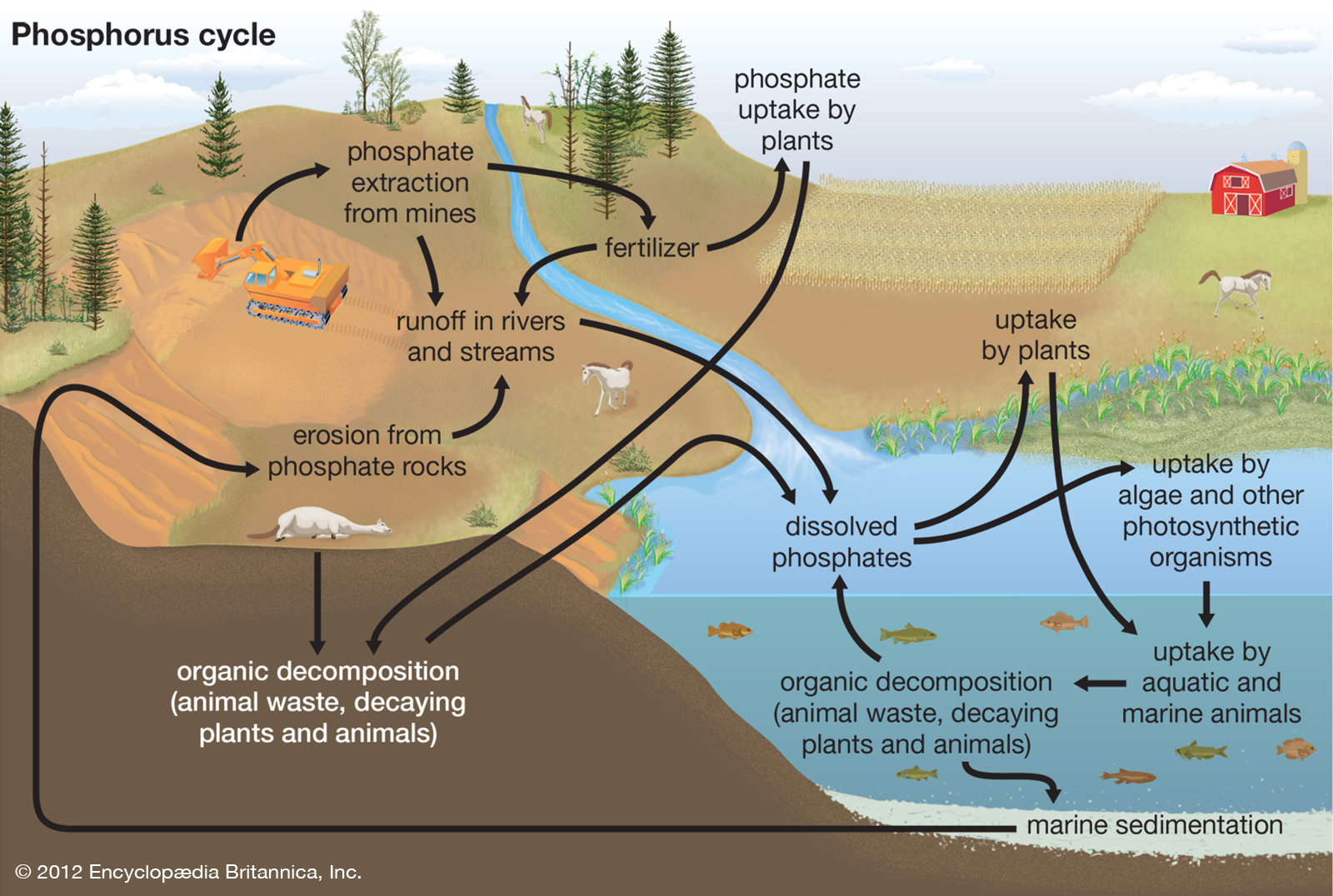Eutrophication: Difference between revisions
No edit summary |
No edit summary |
||
| Line 1: | Line 1: | ||
== Definition == | == Definition == | ||
'''Eutrophication''', sometimes known as hypertrophication, is the process by which a body of water becomes enriched in dissolved nutrients (such as phosphates) that stimulate the growth of aquatic plant life usually | '''Eutrophication''', sometimes known as hypertrophication, is the process by which a body of water becomes enriched in dissolved nutrients (such as phosphates) through the intense breakdown of soil sediments that stimulate the growth of aquatic plant life. This will usually lead to the depletion of dissolved oxygen which is known as hypoxia. [1] This phenomena is perfectly fine when it happens at normal rates, but not at the rates that we are currently witnessing. | ||
== Causes == | == Causes == | ||
While eutrophication is usually a natural process that takes place over the course of hundreds of years, it has in recent decades been negatively influenced and accelerated due to human influence. Naturally occurring eutrophication happens on geologic time scales, [3] but as mentioned, that is no longer the case in most places due to anthropogenic or cultural eutrophication. Cultural eutrophication occurs through either non-point source or point source pollution at the hands of humans. [2] | While eutrophication is usually a natural process that takes place over the course of hundreds of years, it has in recent decades been negatively influenced and accelerated due to human influence. Naturally occurring eutrophication happens on geologic time scales, [3] but as mentioned, that is no longer the case in most places due to anthropogenic or cultural eutrophication. Cultural eutrophication occurs through either non-point source or point source pollution at the hands of humans. [2] Examples of point-source pollution that increase the rates of eutrophication would include, | ||
[[File:126077-050-117592F5.jpg]] | |||
== Consequences == | == Consequences == | ||
Revision as of 16:10, 5 May 2019
Definition
Eutrophication, sometimes known as hypertrophication, is the process by which a body of water becomes enriched in dissolved nutrients (such as phosphates) through the intense breakdown of soil sediments that stimulate the growth of aquatic plant life. This will usually lead to the depletion of dissolved oxygen which is known as hypoxia. [1] This phenomena is perfectly fine when it happens at normal rates, but not at the rates that we are currently witnessing.
Causes
While eutrophication is usually a natural process that takes place over the course of hundreds of years, it has in recent decades been negatively influenced and accelerated due to human influence. Naturally occurring eutrophication happens on geologic time scales, [3] but as mentioned, that is no longer the case in most places due to anthropogenic or cultural eutrophication. Cultural eutrophication occurs through either non-point source or point source pollution at the hands of humans. [2] Examples of point-source pollution that increase the rates of eutrophication would include,

Consequences
Prevention & Reversal
References
1. Eutrophication. (n.d.). . Merriam-Webster. https://www.merriam-webster.com/dictionary/eutrophication. 2. Chislock, M. F., Doster, E., Zitomer, R. A. & Wilson, A. E. (2013) Eutrophication: Causes, Consequences, and Controls in Aquatic Ecosystems. Nature Education Knowledge 4(4):10 3. Callisto, Marcos; Molozzi, Joseline and Barbosa, José Lucena Etham (2014) "Eutrophication of Lakes" in A. A. Ansari, S. S. Gill (eds.), Eutrophication: Causes, Consequences and Control, Springer Science+Business Media Dordrecht. doi:10.1007/978-94-007-7814-6_5. ISBN 978-94-007-7814-6.